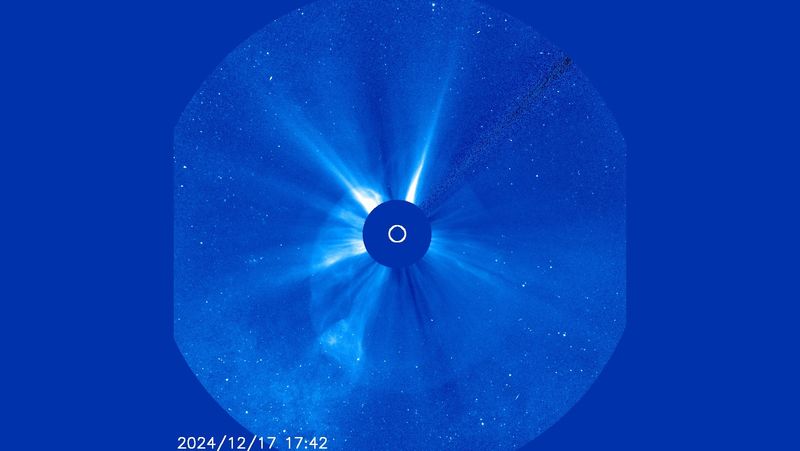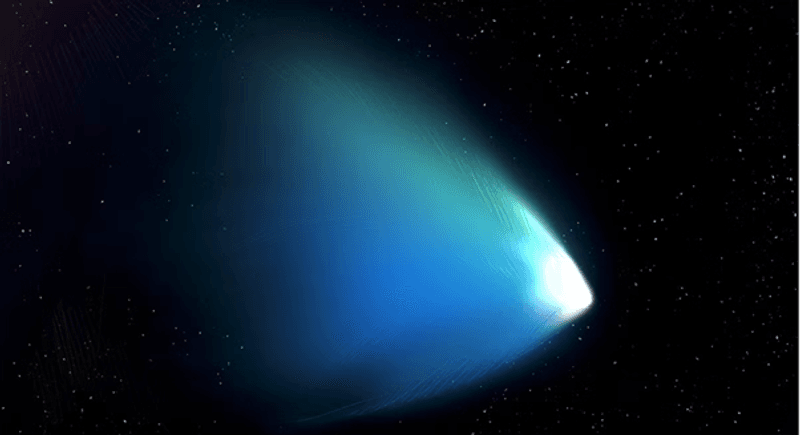Solar scientists think there is a very active sunspot on the far side of the Sun. Sunspots are a common feature, especially during Solar Maximum, but we are yet to see this particular one. It will come into view next week, but something must be stirring the solar activity. In the last 10 days, four coronal mass ejections (CMEs) have been seen leaving the other side of the Sun. Among them, one with a speed so exceptional that its classification is simply: extremely rare.
.gif)
These extremely rare coronal mass ejections (ER CMEs) move at more than 3,000 kilometers (1,864 miles) per second. That’s more than 1 percent of the speed of light. They happen less than once every 10 years. This is where the fun starts. The last ER CME was in March 2023. That one too, luckily, was moving away from Earth and did not impact the planet.
The latest one took place on December 17, preceded by two smaller CMEs. The first two were described by solar physicist Dr Ryan French as extremely photogenic – and we can’t disagree with his professional assessment. But it was the later one that broke records.
It was a full halo CME and it left the Sun at a phenomenal 3,161 kilometers (1,964 miles) per second. If it had been directed towards Earth, it would have reached our planet in just 18 hours. Usually, CMEs take a couple of days to reach us.
Dr French pointed out that if this CME had been directed at Earth, it could have caused one of the largest geomagnetic storms in decades. That would not just mean incredible aurorae to lower latitudes as we saw back in May. It would also mean power grid fluctuations, transformers breaking, and satellites experiencing more drag and getting electrically charged. There are serious risks when it comes to these extreme events.
The strongest geomagnetic storm on record is the “Carrington Event”, but it is unlikely that this CME was at its level. A geomagnetic storm as extreme as Carrington would be an incredibly serious natural disaster.
Back in 2008, NASA estimated a similar event could leave up to 130 million people in the US without power, which would lead to “water distribution affected within several hours; perishable foods and medications lost in 12-24 hours; loss of heating/air conditioning, sewage disposal, phone service, fuel re-supply and so on.” Insurance market Lloyd’s estimate that the damage from a Carrington-level event in today’s world would be between $0.6 to 2.6 trillion.



![A dense cluster of bright stars, each with six large and two small diffraction spikes, due to the telescope’s optics. They have a variety of sizes depending on their brightness and distance from us in the cluster, and different colours reflecting different types of star. Patches of billowing red gas can be seen in and around the cluster, lit up by the stars. Small stars in the cluster blend into a background of distant stars and galaxies on black.]](jpg/glittering-m.jpg)

